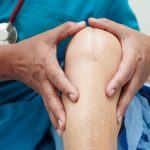Menopause is a significant phase in a woman’s life marked by the end of menstruation and a decline in reproductive hormones. While many focus on symptoms like hot flashes and mood swings, another common but often overlooked issue is joint pain.
This blog post will explore the connection between menopause and joint pain, what might be causing it, and strategies for managing this discomfort.
Quick Summary
Yes, menopause can cause joint pain due to hormonal changes, which may lead to decreased bone density and inflammation.
What is Menopause?
Menopause is defined as the point in time when a woman has not had a menstrual period for 12 consecutive months. This natural biological process typically occurs in women in their late 40s to early 50s.
The primary cause of menopause is the gradual decline in the production of hormones such as estrogen and progesterone by the ovaries.
Does Joint Pain During Menopause?
Joint pain during menopause can be attributed to several factors:
Estrogen Deficiency
Estrogen has a protective effect on joint health and connective tissues. When estrogen levels drop during menopause, it can lead to:
Increased Inflammation: Lower estrogen levels can exacerbate joint inflammation, leading to pain and discomfort.
Decreased Lubrication: Estrogen helps maintain joint lubrication. A deficiency may result in drier, stiffer joints.
Bone Density Loss
One of the most significant concerns during menopause is the loss of bone density:
Osteoporosis: Estrogen deficiency contributes to bone loss, increasing the risk of osteoporosis. Weakened bones can put additional stress on the joints, leading to pain.
Joint Stress: Reduced bone density can lead to structural changes in the joints, contributing to discomfort and pain.
Age-Related Changes
Menopause often coincides with aging, which can also contribute to joint pain:
Wear and Tear: Joints naturally experience wear and tear over time, which can be exacerbated during menopause.
Reduced Physical Activity: Hormonal changes can lead to decreased physical activity, negatively affecting joint health and contributing to stiffness and pain.
Managing Joint Pain During Menopause
If you’re experiencing joint pain during menopause, several strategies can help manage and alleviate discomfort:
Maintain a Healthy Weight
Excess weight can stress the joints, particularly those in the lower body. Maintaining a healthy weight through a balanced diet and regular exercise can reduce joint pain.
Exercise Regularly
Engaging in regular physical activity can help:
Strengthen Muscles: Strong muscles support and stabilize joints, reducing pain.
Improve Flexibility: Stretching and flexibility exercises can help maintain joint range of motion.
Boost Bone Health: Weight-bearing exercises can help maintain bone density and overall joint health.
Balanced Diet
Eating a diet rich in:
Calcium and Vitamin D: Essential for bone health and can help reduce the risk of osteoporosis.
Anti-Inflammatory Foods: Fatty fish, nuts, and leafy greens can help reduce inflammation and joint pain.
Stay Hydrated
Adequate hydration is crucial for joint health. Drinking plenty of water helps maintain joint lubrication and can reduce stiffness and pain.
Consider Supplements
Certain supplements may be beneficial for joint health:
Glucosamine and Chondroitin: These supplements may help support joint cartilage and reduce pain.
Omega-3 Fatty Acids: Known for their anti-inflammatory properties, they can help manage joint pain.
Consult a Healthcare Provider
If joint pain becomes severe or persistent, consult a healthcare provider. They can help determine the underlying cause and recommend appropriate treatments or therapies.
Other Factors Contributing to Joint Pain During Menopause
While hormonal changes are a significant contributor to joint pain during menopause, other factors can also play a role, including:
Weight gain: Many women experience weight gain during menopause, which can add stress and strain on the joints, particularly the knees, hips, and ankles.
Decreased physical activity: Menopausal women may become less physically active due to fatigue, joint pain, or other symptoms, further exacerbating joint issues.
Underlying conditions: Certain pre-existing conditions, such as rheumatoid arthritis or osteoporosis, can worsen during menopause, leading to increased joint pain.
Nutritional deficiencies: Hormonal changes can also affect the body’s ability to absorb and utilize important nutrients that support joint health, such as calcium, vitamin D, and omega-3 fatty acids.
Understanding the multifaceted nature of joint pain during menopause is crucial in developing effective strategies for managing and alleviating this common concern.
Managing Joint Pain Through Lifestyle Changes
As we navigate the challenges of menopause, it’s important to take a proactive approach to managing joint pain. Incorporating lifestyle changes can be an effective way to alleviate symptoms and improve overall joint health.
Natural Remedies for Menopausal Joint Pain
One of the first steps in managing joint pain during menopause is to explore natural remedies. These can include:
Dietary supplements: Supplements containing glucosamine, chondroitin, and omega-3 fatty acids may help reduce inflammation and support joint health.
Anti-inflammatory herbs: Herbs like turmeric, ginger, and boswellia have potent anti-inflammatory properties that can help alleviate joint pain.
Topical treatments: Applying topical creams or oils containing menthol, capsaicin, or essential oils can provide localized relief for joint pain.
Seeking Medical Help for Menopausal Joint Pain
While natural remedies can be helpful, seeking medical advice is important, especially if the joint pain is severe or persistent. A healthcare professional, such as a rheumatologist or an orthopedic specialist, can provide a comprehensive evaluation and recommend appropriate treatment options, which may include:
Hormone replacement therapy (HRT): In some cases, HRT can help alleviate joint pain by restoring the hormonal balance and reducing inflammation.
Medication: Nonsteroidal anti-inflammatory drugs (NSAIDs), pain relievers, or prescription medications may be prescribed to manage joint pain and inflammation.
Physical therapy: A physical therapist can develop a customized exercise program to improve joint mobility, strength, and flexibility, as well as provide other interventions like heat/cold therapy.
Coping Strategies for Women Experiencing Joint Pain During Menopause
In addition to medical and natural interventions, it’s essential to adopt coping strategies that can help manage the emotional and psychological aspects of joint pain during menopause. Some effective strategies include:
Stress management: Engaging in stress-reducing activities like yoga, meditation, or deep breathing can help alleviate the impact of stress on joint pain.
Maintaining a healthy lifestyle: Adopting a balanced diet, regular exercise, and getting enough sleep can all contribute to better joint health and overall well-being.
Seeking support: Connecting with other women experiencing similar challenges through support groups or online communities can provide valuable emotional and practical support.
Conclusion
As we’ve explored, the link between menopause and joint pain is complex and multifaceted. By understanding the underlying hormonal changes and other contributing factors, we can proactively manage joint pain and improve our overall quality of life during this significant transition.
Remember, you don’t have to face menopausal joint pain alone. Contact your healthcare provider or explore natural remedies to find the best approach. Together, we can empower women to take control of their health and find relief from joint pain during menopause.



